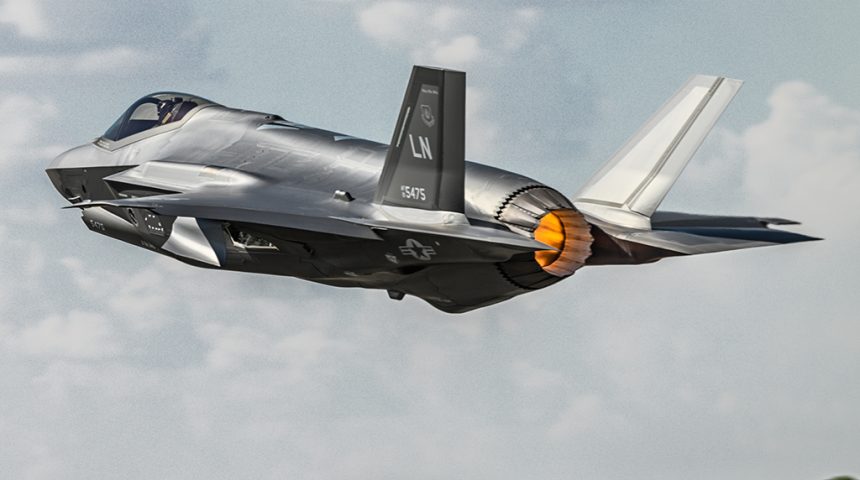U.S. Air Force F-35s and U.S. Navy Super Hornets from USS George W. Bush took part in latest TLP flying course.
Running from Sept. 12 to 30, 2022, Tactical Leadership Programme Course 22-3, held at Los Llanos air base in Albacete, Spain made history with the first on-base participation of the F-35 5th generation aircraft and the participation of the U.S. Navy with Super Hornets off USS George H.W. Bush aircraft carrier.
Although a previous iteration of the TLP Course had been held at Amendola Air Base, Italy, with the participation of the local-based Italian F-35As of the 32° Stormo (Wing), this was the first time that F-35 of any operator took part in the drills from Albacete. The 23-4 course also saw participation of US F-35Bs that had deployed with HMS Queen Elizabeth from Rota NAS in the southern part of Spain and were due to have been joined by UK F-35Bs operating directly from the carrier. But, as mentioned, this time the stealth jets, from the recently formed Lakenheath (UK) based squadron (495FS “Valkyries”), flew from the TLP’s main operating base with a total of six aircraft deployed.
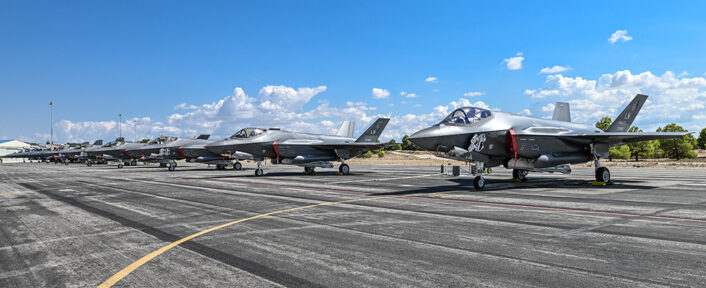
The F-35s were joined by F15Es from the 48th Fighter Wing at Lakenheath (492nd and 494th Fighter Squadrons) taking on both Blue and Red roles for the course.
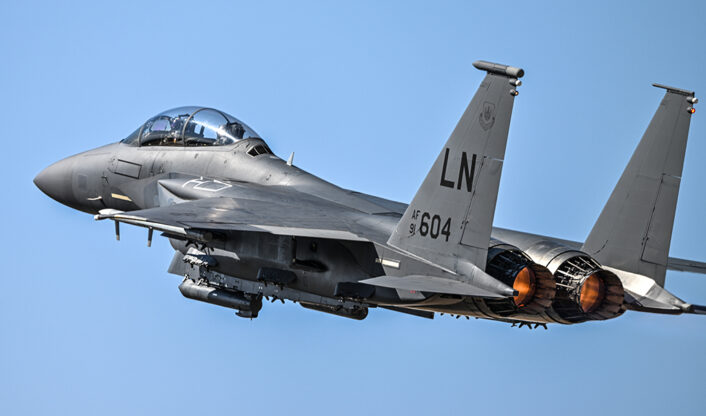
The surprising addition to this course were four Super Hornets F/A-18E/F from VFA-103 and VFA-86 Squadrons embarked aboard USS George Bush carrier. The flattop is currently deployed in the Mediterranean and the crews took the opportunity to participate after some last minute slots became available.
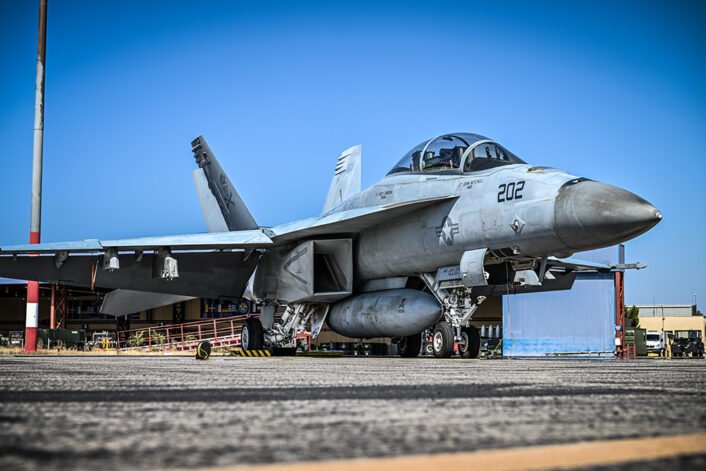
All of the US participants have shown a great interest in continuing to participate in the programme.
One of the objectives of the TLP programme is to determine how to best integrate the capabilities of the 5th generation aircraft with 4th generation aircraft and this is being put to the test at the TLP.
When asked why TLP was so important when the current UK based squadrons already operate together with the F-35 and F-15Es, the course commanders were keen to point out the diverse nature of participant air forces at TLP so that interoperability can be shared and determined across a wider cross section of air forces than just the UK and USAF. This, combined with the air space allocation available and weather makes TLP a great location.
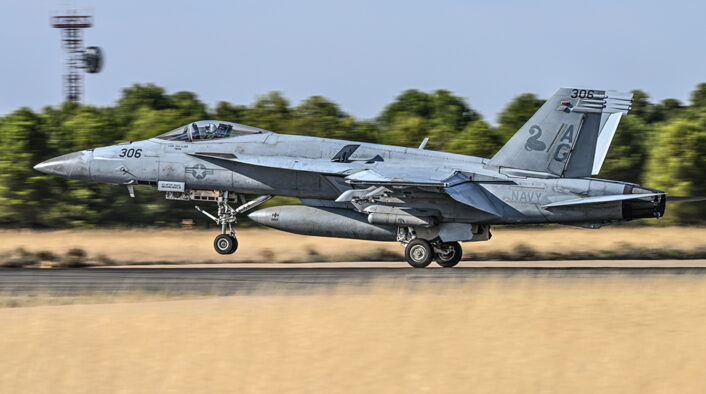
When the UK Wing Commander “Milo” was pressed regarding UK participation at the TLP, or lack thereof, he pointed out the UK’s operational requirements and the need to balance out operational deployments with maintenance and exercises made TLP participation difficult. Nonetheless, it is expected that RAF Typhoons will be seen in 2023 at TLP with UK F-35Bs joining later in 2024.
As for other nations who have commenced F-35 programmes, commanders stressed the need to have fully operational and experienced crews, with at least 500 flying hours on the airframe, before taking part at TLP. This means that other nation’s participation at TLP with F-35 will need to wait until the experience has been built up.
The TLP Course accommodates approximately 700 crew members with 32 of these being graduates of the flying course which includes 21 pilots, 6 intelligence officers and 5 air traffic controllers.
Other participants at this course were Danish and Belgian F-16s and Spanish Eurofighters and a French E-3 operating out of France which also supplied a MQ-9 Reaper.
A full album with all the Author’s photographs taken at the TLP 22-3 Media Day can be found here.

